
Chronic pain can be challenging to manage, and sometimes short-term fixes like pain medication aren’t always effective long-term solutions. One long-term solution for diagnosing and managing chronic shoulder pain is a surgery called shoulder arthroscopy. This minimally invasive procedure aims to examine and/or repair the tissue inside and around your shoulder joint. If your physician finds extensive damage in your shoulder during your shoulder arthroscopy, they may choose to proceed with open surgery.
Learning more about what shoulder arthroscopy is, what it treats and what you can expect during recovery is paramount in treating your shoulder injury or managing chronic shoulder pain. We want you to be informed so if you schedule an appointment at the New York Spine Institute with one of our physicians you’ll be prepared and ready to discuss your options concerning shoulder arthroscopy.
What Is Shoulder Arthroscopy Surgery?
Shoulder arthroscopy requires general or regional anesthesia to prevent you from experiencing any pain during your surgery. General anesthesia puts you to sleep for the duration of the procedure, while your physician will administer regional anesthesia to the entire arm of the shoulder your arthroscopy will be performed on.
Once you’re comfortable and pain-free, your physician will place an arthroscope, a small camera, into your shoulder through a small incision. Your physician will see what the camera picks up through a connected video monitor. Your physician will use the arthroscope to inspect the ligaments, cartilage, bones and tendons on and near your shoulder.
After your physician understands your shoulder’s internal landscape, they will proceed to clean your shoulder up by removing any damaged tissue around the joint. They will also repair any tears you may have. Depending on what your physician finds in your shoulder, they may want to perform an additional surgery, such as a rotator cuff surgery, impingement syndrome surgery or shoulder instability surgery.
Your physician may also perform subacromial decompression during your arthroscopy. Shoulder arthroscopy with subacromial decompression is the technique a physician uses when they want to see if any of your shoulder tendons have internal damage. If your physician detects any loose bodies or spurs during their inspection, they will take care of those for you.
Once your full surgery is complete, your physician will close the incisions they’ve made with stitches and cover them with a bandage. Once you’re awake and alert, your physician will show you any pictures they took with the video monitor to show what they found in your shoulder. You and your physician will discuss the next steps for your treatment plan.
Minimally invasive surgeries, such as shoulder arthroscopy, offer several benefits:
- Quicker healing
- Less blood loss
- Less scarring
- Regaining more use of your shoulder once you’re finished healing
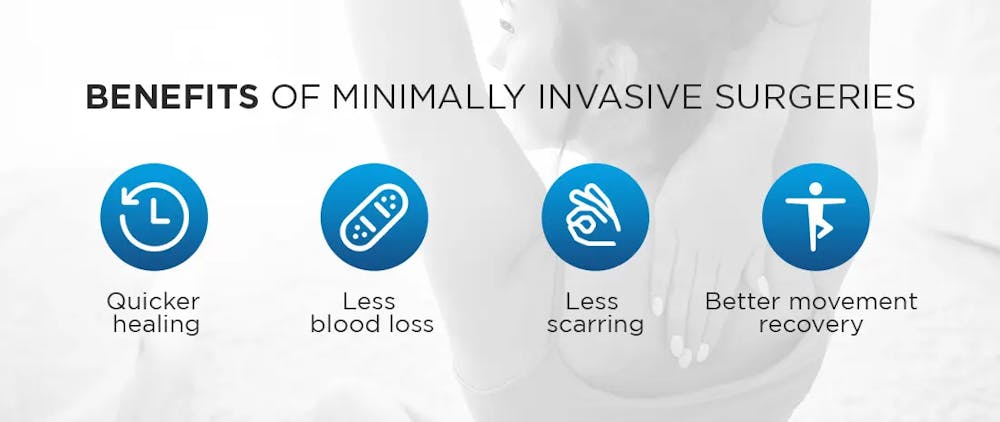
Why You May Need Shoulder Arthroscopy
If you’re not sure why exactly your shoulder hurts, it’s best to see a specialist before making plans for surgery. Your physician will work closely with you to decide if you’re a candidate for shoulder arthroscopy. Typically, patients who seek out shoulder arthroscopy have one or more of the following health issues:
- A chronically dislocated or loose shoulder joint
- Inflammation surrounding the rotator cuff
- A bone spur surrounding the rotator cuff
- Loose tissue in the shoulder
- Lack of room for the shoulder to move around
- Injured bicep tendon
- Arthritis in the collarbone
- Injured or torn ligaments
- Injured or torn cartilage ring
- A torn rotator cuff
Rotator cuff injuries or tears are common causes for needing shoulder arthroscopy. The group of muscles encompassing your shoulder joint is referred to as your rotator cuff. If you experience a swift, sharp pain in your shoulder after heavy lifting or if your symptoms showed up after a recent fall, you likely have a torn rotator cuff. You might not notice the start of pain after any particular incident — even dull aches in your shoulder you’ve experienced for quite some time could indicate a torn rotator cuff.
If you notice an increase in your shoulder pain when you lie on your side, it could be a sign of a tear in your rotator cuff. Your rotator cuff helps you maintain a large range of motion in your arm, so contact a specialist if you have a limited range of motion.
Some shoulder issues — such as impingement, instability, frozen shoulder and arthritis — masquerade as rotator cuff injury, which is why it’s so important to see a physician for an official diagnosis.
You can treat some rotator cuff injuries with physical therapy, rest and medicine, like steroids. If you’ve tried other methods for healing your shoulder and nothing seems to be doing the job, it might be time to consider shoulder arthroscopy.
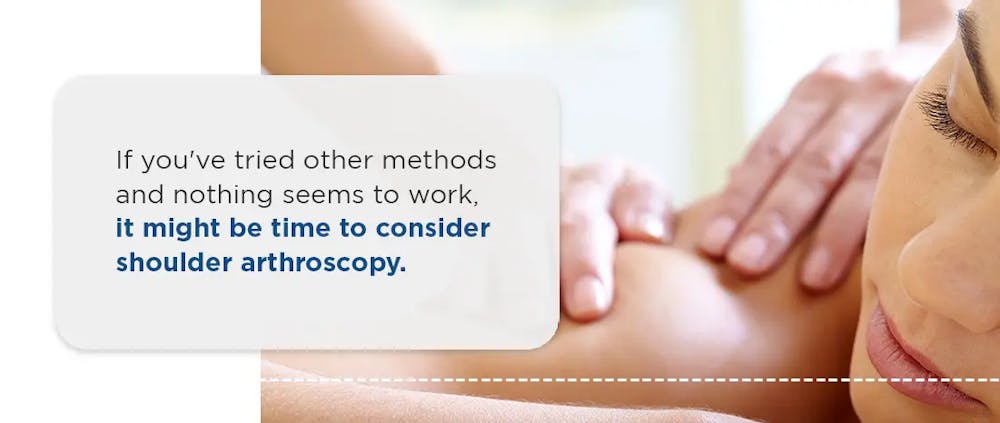
What to Expect After Shoulder Arthroscopy
Before your surgery or right after, your physician or a member of their team will provide you with care instructions to teach you how to take care of yourself after your surgery. Instructions for care include how to clean your incision, when and how much medication to take, common symptoms you might experience after surgery and alarming symptoms that should prompt you to reach out to your physician.
You’ll likely need to wear a sling after surgery. If you’re comfortable taking pain medications, make sure you’re aware of the possible symptoms you might experience while on them. These symptoms may include nausea, itching, vomiting, allergic reactions and bowel issues.
Your physician may set you up with a physical therapist post-surgery to help you manage the overall outcome of your procedure. Physical therapy is important for regaining strength and range of motion in your shoulder. How long you should expect to be in physical therapy depends on what procedures your surgery entailed.
Your physical therapist will work at the speed of your recovery rate using exercises to move your shoulder and assess its current condition. Once your therapist feels like you are ready to move on to self-initiated exercises, they will teach you how to move your arms. They will then help you start resistance exercises to rebuild your shoulder strength.
If your physician used Steri Strips or a similar adhesive to close your external incision, expect them to come off on their own after several days. Contact your physician if your adhesives haven’t fallen off after several weeks.
After you’re done healing, the symptoms that initiated the shoulder arthroscopy in the first place will hopefully start to improve. You may experience pain relief and greater mobility in your shoulder after surgery. You might be at an increased risk for a higher level of pain after surgery if your shoulder issues were caused by an accident or an occupational disease.
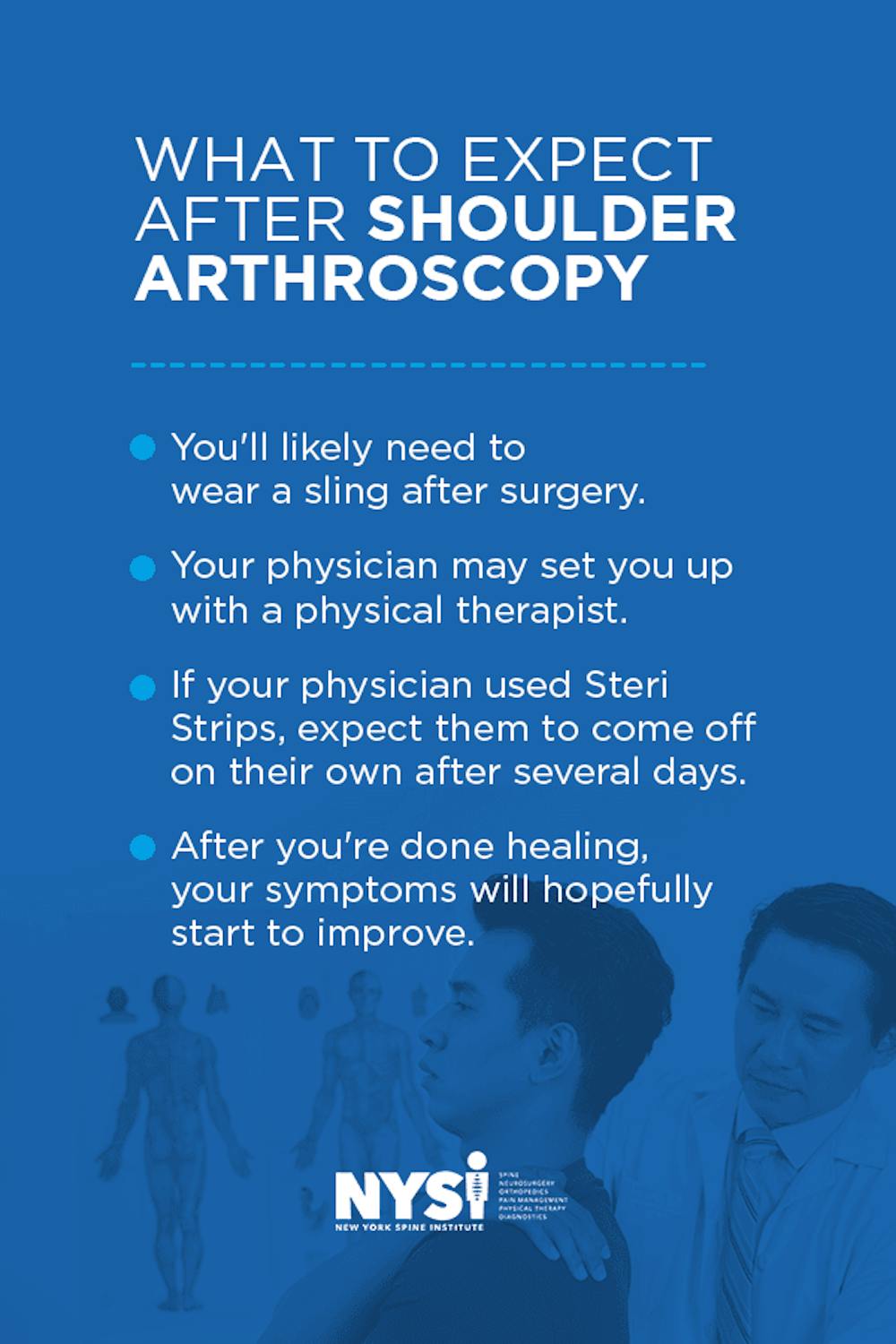
How Safe Is Shoulder Arthroscopy?
Discuss any worries you might have about the safety of shoulder arthroscopy with your physician before scheduling your surgery so you are completely comfortable with your decision when surgery day comes. Like all surgeries, there are some risks associated with shoulder arthroscopy, which include the following:
- Blood clots: Alert your physician if you have any of the following symptoms of a blood clot in a particular area of your body, including severe swelling, pain, tenderness, a feeling of warmth and red discoloration.
- Infection: This complication is rare, but it is always a risk when your body is exposed to bacteria.
- Allergic reactions: Some patients have allergic reactions to medicines used during this surgery, such as anesthesia. Only one out of every 20,000 patients experience a true allergic reaction to anesthesia.
- Problems breathing: Some patients have difficulty breathing when they awake from anesthesia because it temporarily alters how your body breathes. Your medical team will help you adjust as needed and discuss concerns.
- A stiff shoulder: It’s common to experience shoulder stiffness after shoulder arthroscopy. This pain is typical but could last several months. If it becomes unbearable or worsens, contact your doctor.
- Shoulder weakness: After surgery, you may notice that your shoulder is not at its full strength in terms of supporting your arm movements. This weakness typically fades with time and consistent physical therapy.
- Failure of the internal tear to heal: Your physician might have to make internal incisions during your shoulder arthroscopy. As with any incision, these incisions run the risk of not healing or taking longer than usual to heal.
- Blood vessel injury: A blood vessel injury may result in bleeding. The physician will likely notice this during surgery if it occurs.
- Nerve injury: Your shoulder joint has a host of major nerves surrounding it, which is why it is possible to experience nerve damage with this surgery. Some patients who undergo shoulder arthroscopy experience nerve pain.
- Cartilage damage: Torn or damaged cartilage can be a complication of this surgery if the surgeon makes incisions near cartilage.
In some cases, your shoulder arthroscopy may not yield concrete results or address your symptoms. While disappointing, it’s a necessary part of receiving a full diagnosis and eliminating possibilities. Your doctor will explain each possible risk to you and answer any questions you have. Remember, doctors suggest surgeries when they believe the outcome could be more beneficial than the risk of side effects — but the choice is always yours to make.
How Long Does Shoulder Arthroscopy Surgery Take?
Shoulder arthroscopies can take several hours, depending on what the surgeon finds. Be sure to arrive at the outpatient center or hospital performing your surgery earlier than when your surgery is scheduled, as pre-operative procedures can take up to an hour or more. Your medical team will let you know when to arrive.
After your surgery is over, your medical team will wait until you’re recovered from the anesthesia before they send you home. Make sure you arrange for transportation home after your surgery, as it is unsafe to drive after you’ve been under anesthesia.
How Long Does It Take to Recover From Arthroscopic Shoulder Surgery?
How long it takes for your shoulder to heal and how soon you can go back to using it as normal depends on what your physician needs to do during surgery. For example, depending on the type of damage to your shoulder and how extensive it is, it may take 1-6 months for your shoulder to heal. Your doctor will be able to give you a more accurate estimate.
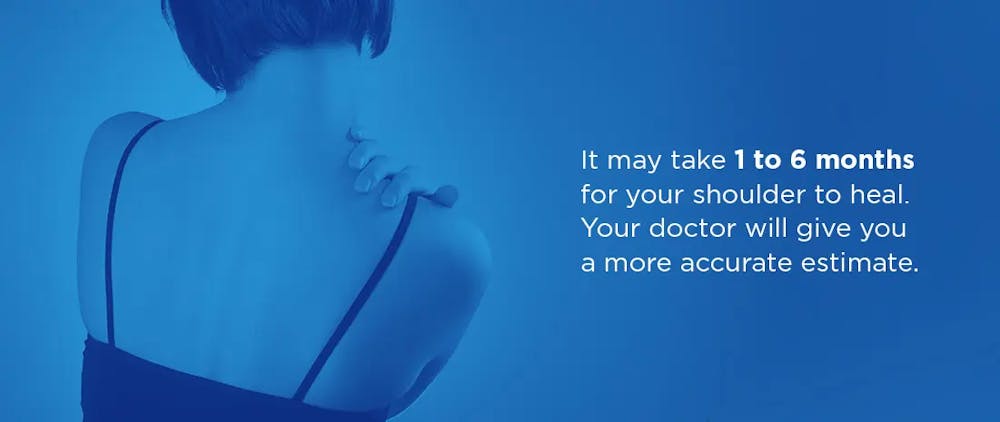
You may also find that you have to wait between a week and several months to resume any of your normal physical activities, such as work-related activities or playing sports. Be careful not to exert yourself, and be sure to follow all doctor and physical therapist recommendations.
Is Shoulder Arthroscopy Painful?
If your physician administers anesthesia, you should feel no pain during the procedure.
Post-surgery pain is common. Your physician will give you the tools to manage your pain at home in a way that’s comfortable for you. Narcotics — such as oxycodone — ice and physical therapy are all used to manage pain after shoulder arthroscopy surgery. Your physician and their team will give you detailed instructions on properly using these pain management methods.
Though rare, shoulder arthroscopy can cause Complex Regional Pain Syndrome (CRPS), which results in long-lasting pain that does not respond well to methods of pain management.
How Long Does Inflammation From Shoulder Arthroscopy Last?
It’s normal for your shoulder to be inflamed and swollen after surgery. This swelling and inflammation should go down within the first few days, but it’s best to contact your physician if it worsens or lingers beyond that time frame. They will assess your symptoms and tell you if it’s cause for concern or just a part of your body’s natural healing process.
How Long Will Ice Be Helpful After Shoulder Arthroscopy?
Icing your shoulder after surgery is a good way to relieve pain as long as you don’t get your incision wet. For the best results, ice your shoulder in small increments throughout the day for the first week or two after surgery. While applying ice is especially important during your first two days post-surgery, you can still use ice to relieve any pain you might have going forward in your healing process.
Living With a Sling After Shoulder Surgery
In most cases, your arm will be put in a sling right after your surgery to begin limiting your shoulder’s mobility while it heals. Ask your physician if it’s okay to take your arm out of the sling a few times a day to stretch your elbow and move your fingers gently. The amount of time you spend in the sling after surgery depends on how intensive the surgery ended up being.
On average, you can expect to wear the sling for several weeks after your surgery. Some shoulder arthroscopies, such as those involving tissue repair, may require the patient to wear their sling slightly longer.
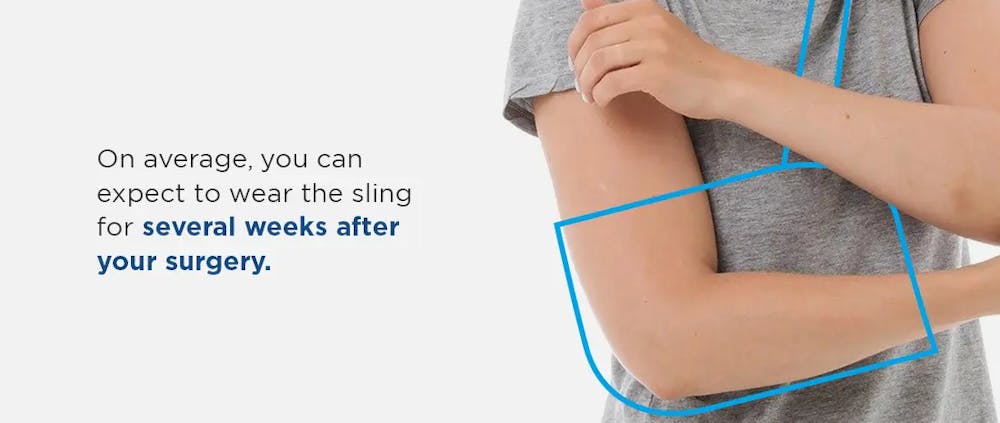
How Many Days Before Shoulder Arthroscopy Should I Abstain From Alcohol?
In general, it’s best to stop drinking two days before your surgery, which means that you should not consume any alcohol 48 hours before your scheduled procedure. Drinking alcohol in the 48 hours before your surgery can lead to the following complications:
- Dangerous interactions between the alcohol and anesthesia
- Dangerous interactions between the alcohol and any medications you’ll be taking post-surgery
- An increased risk for bleeding and infection
- Delayed healing
How Much Does Shoulder Arthroscopy Cost?
The cost of your surgery heavily depends on how much of the procedure your insurance will cover and how much your out-of-pocket fee will be.
If you want a more precise estimate of what the surgery will cost, you can contact your health insurance company and tell them the services that will be involved in your procedure. For example, shoulder arthroscopies typically involve the cost of your hospital stay, your anesthesia, your surgeon, lab tests and imaging. A health insurance agent should be able to help you navigate the possible costs of your shoulder arthroscopy.
How to Plan for Shoulder Arthroscopy Surgery
Planning for surgery isn’t as simple as one initial doctor’s visit and outpatient surgery. Finding a surgeon you trust with your surgery— including determining if the procedure is right for you and ensuring you’re healthy enough physically and mentally — is paramount for the surgery’s success.
Find Your Surgeon
Finding a qualified surgeon you trust to perform your shoulder arthroscopy surgery is essential for your comfort during the planning and operative process. Look for the following when choosing a physician to perform your surgery:
- Additional training in arthroscopic techniques
- A willingness to tailor their approach to your symptoms
- Fellowship training
- Experience with your specific symptoms
- Accepts your insurance policy
- Has extensive training, education and experience
- Memberships with groups like the American Academy of Orthopedic Surgeons and the Arthroscopy Association of North America
- A valid board certification
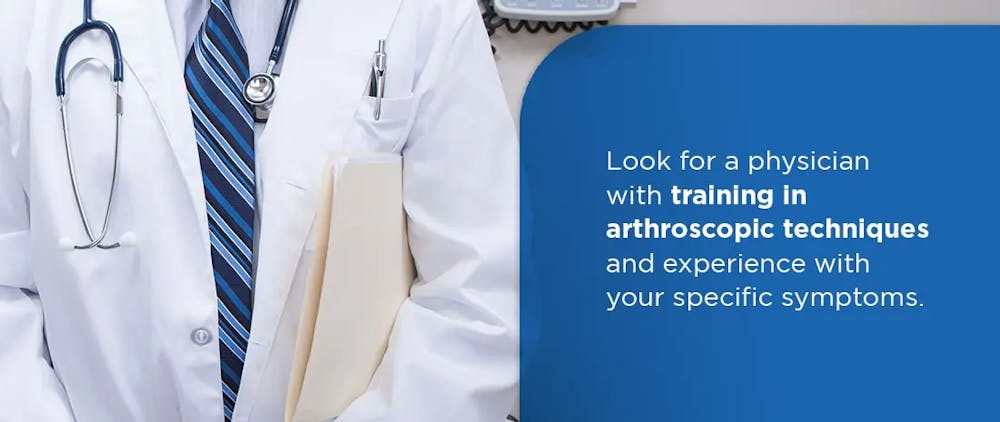
Consider scheduling an appointment at the New York Spine institute to discuss shoulder arthroscopy surgery. Learn more about his background and skillset on our website.
Take Care of Yourself
Your doctor will make sure you are healthy before proceeding with your surgery, but there are steps you can take at home to stay in good health before the day of your surgery. The healthier you are going into the procedure, the faster and more comfortably your body will heal.
The following are ways you can make sure you are in the best shape possible for your surgery:
- Do not smoke during the month before your surgery or for three months after your surgery.
- Make sure your physician has a complete list of the medications you take — including the name, dosage and frequency — as well as any food, latex and medical allergies you might have.
- Stop taking any medications that your doctor has indicated as problematic to take before surgery, such as anti-inflammatory medications and aspirin. Do not stop prescription medications without first consulting your physician.
- Prepare yourself mentally for the surgery itself and the healing journey you will undergo after it’s done.
- Make sure you’ve cleared your schedule of any chores or driving activities that might be difficult to perform after your surgery.
- Create a comfortable, calming recovery area in your home, with all essentials within reach.
- Consider asking a loved one to stay with you the first few days after surgery to assist with movement.
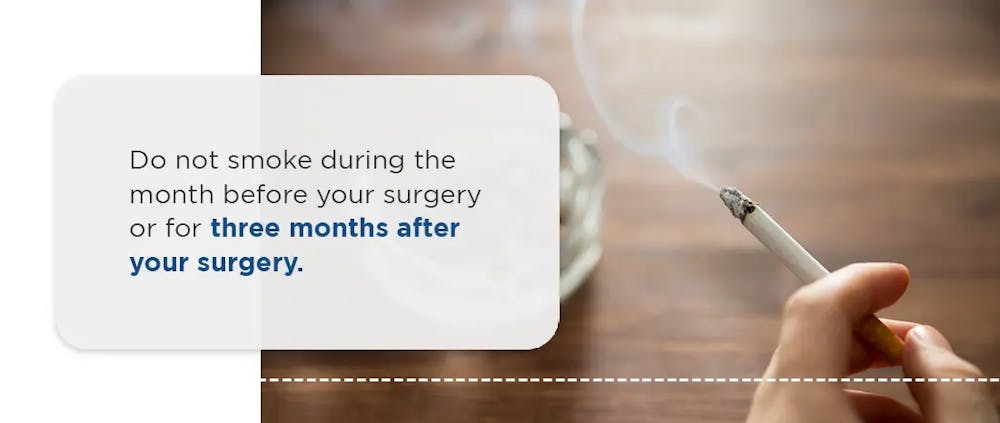
Meet With a Physician at The New York Spine Institute
The New York Spine Institute is a leader in spine care and an excellent place to get shoulder arthroscopy. We are a multispecialty spine and orthopedic center providing a range of services for the following categories of care:
Get to know more about our physicians on our website to find the right doctor for your needs. Review our testimonials to learn more about us — we want you to feel comfortable when you visit The New York Spine Institute.

